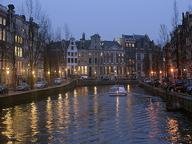Quiz Answer Key and Fun Facts
1. The French tried to build a canal across Panama in the 1880s, but thousands of their workers died of tropical diseases. When the U.S. took over building in the 1900s, what discovery made it possible for their supervisors to figure out the bug in the French plan and have a net reduction in deaths?
2. The Jonglei Canal would divert the waters of the White Nile directly into the Nile River, benefiting the area downstream with a flood of extra water for agriculture. However, the canal has never been finished because that area of Sudan and Egypt has been swamped with political instability. Why do some say the canal is better left unfinished?
3. "I've got a mule and her name is Sal; fifteen miles on the..." The name of what canal comes next in the song? It's downright spooky how many Americans remember the song from their childhood.
4. The Grand Canal in China is the longest in the world and some of its sections date back to the 5th century B.C., so its fame is already locked in. But it has yet another distinction. In the 10th century A.D., Qiao Weiyo invented something for the Grand Canal that is still used today to raise or lower boats, when canals cross different elevations. What did he invent?
5. Because of the traditional enmity between the French and British, this was a dark part of the Suez Canal's history. French Empress Eugenie's yacht L'Aigle was supposed to be the first vessel through the canal when it opened in 1869, but that distinction went to British Captain George Nares' gunvessel, the HMS Newport. Why?
6. The Caledonian Canal connects the west and east coasts of Scotland. Rarely used for industrial transportation, it is monstrously popular with holiday boaters due to its scenery. Some of the canal uses natural waterways. What is the first natural waterway west of Inverness?
7. Venice, Italy is a city built around canals. Local residents are familiar with the busy vaporetti, although foreigners are more apt to have heard of Venice's gondolas. What are vaporetti?
8. The Grand Union Canal is a 137-mile canal that runs from London to Birmingham, England, with a few arms to other cities. Pleasure boaters who want to be gone for days can Google to find a complete map. Other people like to stay on the towpath or around the locks and watch, photograph, draw, and generally show interest in the canal. What are they called?
9. The Karakum Canal in Turkmenistan, a former state of the USSR, was built to irrigate the desert and make cotton a local cash crop. It was constructed mostly in the 1950s and 1960s, before the Soviet Union's power shrank dramatically. However, the canal caused a major environmental disaster. What was it?
10. The Chesapeake and Ohio Canal began in Cumberland, Maryland and ended at the Potomac River near downtown Washington, D. C., where a wooden lock, still visible, once regulated the canal water from the Potomac. What hotel sits near the junction of the canal and the Potomac?
Source: Author
littlepup
This quiz was reviewed by FunTrivia editor
trident before going online.
Any errors found in FunTrivia content are routinely corrected through our feedback system.
